We can monitor any human activities that we can quantify, and wearable technology takes it to another level.
In most cases, healthcare is the application that comes into mind when thinking about wearable tech. Mostly; fitness trackers, that monitor heart rate, steps taken, and calories burned. We use this data to try and improve our health and wellness.
But fitness trackers are just the most common wearable technology. Other examples of wearable tech in healthcare include:
Continuous Glucose Monitors (CGM) – These devices measure glucose levels in real-time. When levels are too high or low, they alert the wearer by vibrating or beeping, also, notify the doctor.
Smart Inhalers – These devices track when and how often someone uses their inhaler. When it’s time to take another dose, they remind the wearer with an alarm.
Rehabilitation Devices – Wearable tech devices that can help people recover from injuries, including exoskeletons and virtual reality devices. Such devices include ReWalk, Ekso Bionics, and Ossur.
You see, not all wearable technology is for general usage. Even for specific medical conditions including heart disease, or Parkinson’s, wearable tech devices help manage and monitor the patient’s condition.
Virtual Reality as Wearable Technology
Today 20% of Americans own some type of wearable technology. That’s fairly more than the number of VR users alone, which is 15%. In fact, only 47% of Americans say they’re at least somewhat familiar with VR. Other forms of wearable technology are more common than VR, regardless of the popularity and hype VR carries.
The stats show that people are more likely to invest in other forms of wearable technologies over VR. And that pretty much makes sense. Mark Zuckerberg’s company, Meta, has lost more than 66% of its value after investing in Metaverse, a VR technology. This is the chart showing the before and after of Meta’s Metaverse VR announcement:
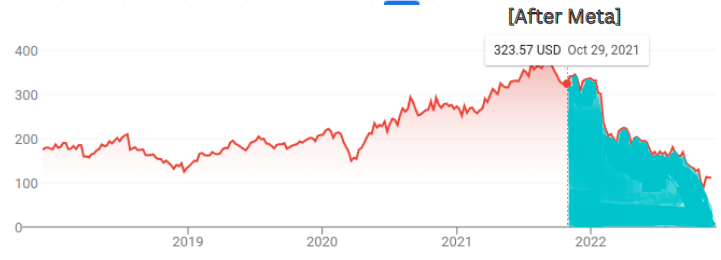
In fact, VR is one such wearable technology that can never be for all. Other wearable techs such as smartwatches, fitness trackers, and smart glasses are much more common and useful. But there can not be one point in time when all people come up to agree that VR is useful. See this for example:
As VR ships us away from reality, it is not a technology we can wear expecting to help in real life.
Wearable Technology Market (2022-2030)
Experts have predicted a compound annual growth rate of 13.89% until 2030 for wearable tech. The rate is more than the smartphone industry’s 2.3%(2022-2026), and subscription gaming’s 12.8% (2022-2030). There are many bases for that prediction:
The miniaturization of technology
The miniaturization of technology is a major factor in the growth of wearable tech. As technology becomes smaller and more powerful, we will find ways to use it in more ways. For example, the first wearable tech devices were large and bulky. Look at the image below:
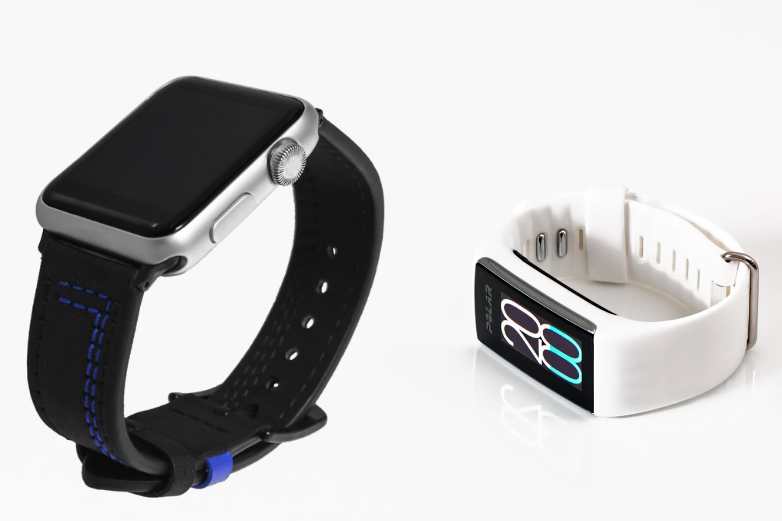
If you look at a brief history of wearable technology, you’ll find bigger and messier devices. But now, we can wear devices that are the size of a watch or even smaller. If a device is small enough, we can wear it anywhere.
Increasing Demand
Apart from miniaturization, the affordability of wearable tech is another factor in its growth. Wearable technology is becoming more affordable with time. And as anyone can wear it anywhere, plus increasing affordability, more people buy it. This has led to more companies making wearable tech, which has led to more competition and lower prices. The demand for wearable technology keeps on increasing with that.
No. of wearable technology applications
The increasing number of applications for wearable tech is another factor in its growth. Wearable tech devices were used for fitness tracking for a long time. But now, we can use wearable tech to track our location, and even communicate with others. And if that was not enough for you, companies are working on using wearable tech to control devices in your house.
Government support
Even governments are now playing a role in the growth of wearable tech. The US government is investing in research, regulations, and the development of wearable tech, helping the industry grow. For example, the FDA has approved the use of wearable tech for medical purposes. You can refer to the list of FDA-cleared wearable devices for more info.
Influence of social media on wearable tech and vice versa
Social media is also playing a role in the growth of wearable tech. The more people that know about wearable tech, the more they will want to buy it. And the more that people buy it, the more companies will make it. Wearable technology could even shape the future of social media. That’s powered by our own body movements, like a blurring of the lines between the digital and physical world. In fact, high-profile social media campaigns are already using wearable technology.
Wearable Technology Market Trends and Reversal
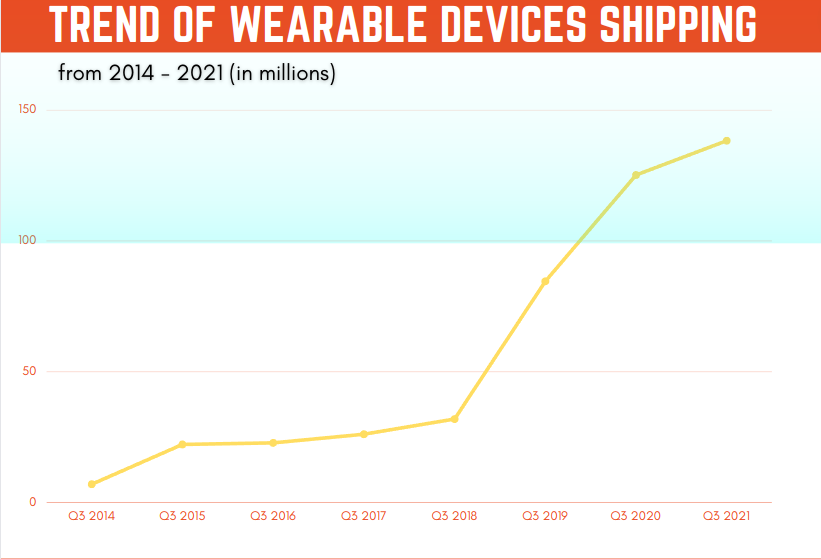
As you can see from the data, the increasing trend in the wearable technology market is unlikely to stop. Talking about the historical trends, the market was consolidating in the mid-2010s. Since 2018, wearable device shipments have skyrocketed. The market is still in its growth stage and is likely to grow even more in the future. There are only a few possible factors that could cause a reversal in the wearable technology uptrend, like:
Economic recession
Recession is not good for any industry, and the wearable technology industry is no different. It can cause a decrease in people’s disposable income. As a result, people would be less likely to spend money on secondary items like wearable devices. For example, in China, following a slowing economy, the shipment of wearable devices decreased by 23.3% in 2022. Because let’s be honest, such devices are far from being default apparel for us. Another good example of this is the decrease in sales of wearable devices during the 2008 financial crisis. At that time, although wearable technology was in its infancy, the industry still saw a noticeable decrease in sales.
Technological disruption
Another factor that could potentially reverse the trend is if there is a technological advancement that makes wearable devices obsolete. For example, if there is a big breakthrough in artificial intelligence that allows people to have all the benefits of a wearable device without actually wearing one, then that would be a technological advancement that could potentially reverse the need, hence the market trend, of wearable technology.
Social stigma
Wearable technologies are highly vulnerable to becoming socially unacceptable. This happens when people think that wearing certain tech devices makes them look strange or geeky. If this does happen, it will slowly keep on reducing the demand for wearable tech products. This has already happened with Virtual Reality. Other forms of wearable devices, especially clothes, may be vulnerable to social stigma. Integrating wearable technology into society will be a challenge as such devices shift us away from the tradition of using technology as a tool.
Privacy concerns
It will be important to see how people view privacy in the near future. If people become more concerned about their privacy, they may be less likely to use devices that track their location and share their data. This could lead to many dips, and overall, decreased demand for wearable tech products. Currently, 84% of Americans are concerned about their privacy in one way or another. But the privacy of wearable technology is a whole different topic. Because, unlike the normal T&Cs agreements, those of wearable technology may even ask for the user’s DNA! People’s obsession with privacy may well be a driving factor for the wearable technology trend reversal.
Wearable Technology of the Future
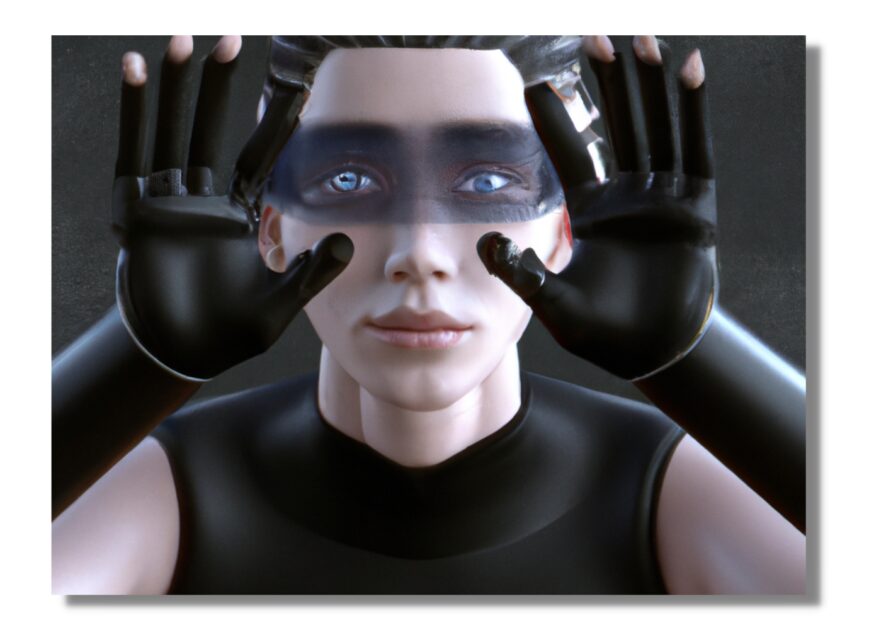
Wearable technology’s future is something else. Today, it’s still fairly bulky and often intrusive. Future wearable devices will be sleek, unobtrusive, and, in many cases, nearly invisible. And that’s due to the impact of these 4 tech pillars:
Nanotechnology
Nanotechnology will allow for the creation of smaller and more efficient devices. This technology will also help create new materials that are more comfortable to wear. Powered by nanotechnology, wearable technology will be better able to integrate with the human body. Nanotechnology’s expected CAGR is 14.5% (2022-2030).
AI and Big Data
In addition to being smaller and more comfortable, future wearable technology will also be more intelligent. This is thanks to the impact of artificial intelligence (AI) and big data. AI will enable devices to better understand and respond to the wearer’s needs. Big data will provide the fuel that AI needs to learn and evolve. AI’s expected CAGR is a whopping 38.1% (2022-2030).
Virtual Reality
No matter whether we like it or not, Virtual reality will also be a key part of future wearable technology. VR headsets will provide wearers with an immersive experience that’s unlike anything that’s possible today. This technology will allow people to explore new worlds, experiences, and realities. There’s no good estimate for the CAGR of the VR industry, as people’s perceptions towards it are extremely volatile.
Blockchain
Blockchain is already having a major impact on future wearable technology. It allows wearable devices to securely store and share data. With time, blockchain will also help create a decentralized ecosystem for wearable devices. This will give people more control over their data and how companies use it. Blockchain’s expected CAGR is 85.9% (2022-2030).
Heavy Privacy Concerns with Wearable Technology
Privacy is a heavy price to pay for making wearable technology mainstream. You constantly wear or carry wearable technologies on the body like this:

It means that the device is constantly collecting data about the wearer. This data can include very personal information. Health data is not confidential for most, for some is too personal and sensitive. However, location, biometrics, and identity data are very important to protect. This concern is not only for the wearer but also for the people around them. For example, Google Glass can record video and audio without the knowledge of the people around the wearer. It does not stop there; some devices can track heart rate, blood pressure, and other health vitals.
The scariest part is that that much data is a lot to harm if it falls into wrong hands. Like, as they collect your fingerprints, passwords, and iris scan, you may be a little worried that hackers can unlock everything you own. But there is much more to steal, not only for hackers but passive observers and illegal researchers. They can learn your daily routines, track your location, and gain access to the conversations on your phone.
How to secure your wearable devices?
If we cope with the following challenges, the amazing potential of wearable technology will be unleashed. For that, one single step is not enough. We need to take a holistic approach to privacy and security.
Be Proactive
We need to be proactive about the security of our devices and data. The first step is understanding what information wearable devices are collecting, and how different parties could use it against us. Then we can take steps to protect ourselves, like encrypting our data, and understanding who we give our information to.
Pressurize companies
We also need to push companies to take security seriously. They should be transparent about data collection. Also, they should give us the option to opt-out of data collection through wearable technology. Companies must encrypt all data from wearable devices we consent to provide them so that it’s safe from hackers. As such, companies are likely to use the “accept the terms and conditions or go away” approach. We will have to discourage them from that as a team.
Make laws
Wearable technology is inevitable, and strong regulations are key. Only governments can play a visible role in this. Not only for any normal person; the US space force, as well, will be using Wearable tracking tech from 2023. The laws to protect the privacy of wearable technology users include:
- Giving users the right to know what data is being collected about them
- Allowing them to access and change their data
- Making companies delete data that is no longer needed
As we enter the wearable technology era, we need to start thinking about privacy as a fundamental right. It’s not a luxury anymore. We should be critical of wearing gadgets and need to ask questions about the impact of that technology on our personal lives.
Wearable technology in Fashion
Fashion is one of the biggest industries in the world, accounting for 2% of the world’s GDP. Wearable technology and the fashion industry are not yet synonymous. But there is not a single reason why they won’t be.
The fashion market has already started using wearable technology. See this for example:

Quite fashionable, ain’t it?
Fashion’s future we see will be driven heavily by wearable clothes. Brands are already starting to experiment with incorporating tech into their garments and accessories. More like this picture + tech:

No, wearable technology in fashion is not about Google Glasses or the new Apple Watch. It’s about clothes and accessories designed with technology in mind. And it’s a trend that is only going to grow in popularity.
In most industries, wearable technology is going to play a part, but fashion’s future will be all about wearable clothes.
Types of wearable technology in fashion
There are a number of different types of wearable technology in fashion, including:
Fabrics: Embedded with sensors. Usage – monitor heart rate, body temperature, and stress levels.
Shoes: Equipped with sensors. Usage – track things like distance traveled, calories burned, and steps taken.
Hats: Sensors built into the brim. Usage – measure brain activity, heart rate, and body temperature.
Belts: Include a buckle with a sensor. Usage – N/A
Glasses: Spectacles with in-built sensors. Usage – capture data about the wearer’s surroundings.

As witnessed in the past, we instantly adapt to new clothing trends. For example, in the 1800s, both men and women wore corsets. In the 1900s, women started to wear less clothing. And In the 2000s, we’ve seen a trend of people wearing more comfortable clothes. We’ve also seen a trend of people dressing more casual. The next step in fashion’s evolution is wearable clothes.
And there are reasons why people will start utilizing wearable clothes:
Self-expression
One of the most important aspects of fashion is self-expression. We use fashion to express our unique identities. As we become more connected, we’ll want to use our clothes to express our individuality even more. With wearable technology such as connected clothes, we’ll be able to do this in more ways than ever before. Furthermore, we use our clothes to express our moods, our interests, and our personalities.
Efficiency
Wearable technology will also allow our clothes to be more efficient. We’ll be able to use our clothes to connect with loved ones, access information, make payments, and much more. Like, using clothes to track our fitness, our sleep, and our diet.
Comfort
Comfort must come along with clothes. Wearable clothes will be more comfortable than ever before. They’ll be able to adjust to our bodies and our environments. The technology is able to keep us warm and cool, dry and clean, safe and secure. Technology like temperature adjusters, moisture wicking, and anti-microbial fabrics will all be part of the wearable clothes of the future.
The Impact of Wearable Technology on the Economy
The economy will love and embrace wearable technology. It provides opportunities for businesses to increase productivity while reducing costs. The devices will also help people stay healthy and fit, which is good for the overall global workforce.
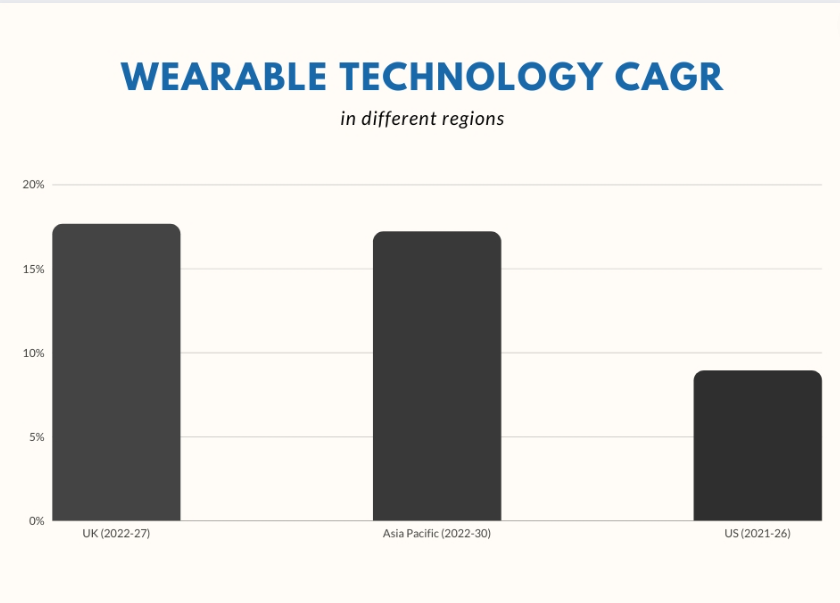
Data Credits:
There are some specific ways in which this new technology will have a positive impact on the economy:
Improved worker productivity
With wearable technology, workers are able to monitor their own energy levels. Due to that, they are able to work for longer periods of time without taking breaks. In addition, they can access data more quickly. This directly means they will be able to make better decisions and increase efficiency at work. And that’s a straight impact on the GDP.
Reduced healthcare costs
Another benefit of wearable technology is that it has the potential to reduce healthcare costs. As people are able to monitor their own health and fitness, they are less likely to get sick or injured. In addition, if people are able to manage their own chronic conditions. In simpler terms, consumers will require less medical care, and healthcare costs will simply reduce.
Increased consumer spending
Another way in which wearable technology will impact the economy is by increasing consumer spending. As people become more tech-conscious, they will be more likely to purchase new tech products that will help them stay healthy and fit. With increasing comfort with wearable technology, based on how advanced the tech gets, they will spend a fair portion of their salary in it.
Improved quality of life
Lastly, wearable technology has the potential to improve the quality of life for people all over the world. If people are able to stay healthy and fit, they will be able to enjoy their lives more. Additionally, if people are able to access information and data more quickly, they will be able to make better decisions. And all in all, improve their overall quality of life. Improved quality of life accounts for a positive impact on the economy.
Conclusion
Wearing different smart devices can affect how people interact with technology and their surroundings. As the wearable technology market is likely to continue its uptrend for decades, the concerns keep growing. With a small number of companies, controlling the majority of the market, it is important to consider privacy implications. A growing market is always good with growing competition, however, Apple (30.5%), Google (10.3%), and Xiaomi (9.3%) control over 50% of the market. And that can be a bit concerning for some. However, the biggest industries like the fashion industry’s future rely on wearable technology. As such, the saturation of the market may ease with time.
- AI-Powered PCs: Overhyped Trend or Emerging Reality? - August 21, 2024
- Princeton’s AI revolutionizes fusion reactor performance - August 7, 2024
- Large language models could revolutionize finance sector within two years - March 27, 2024



